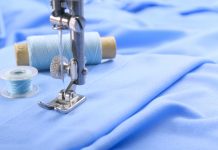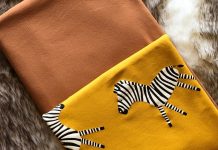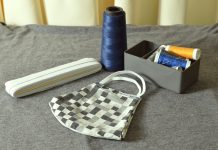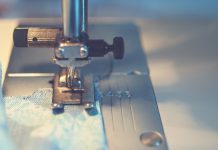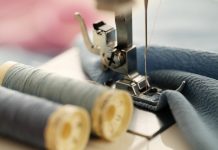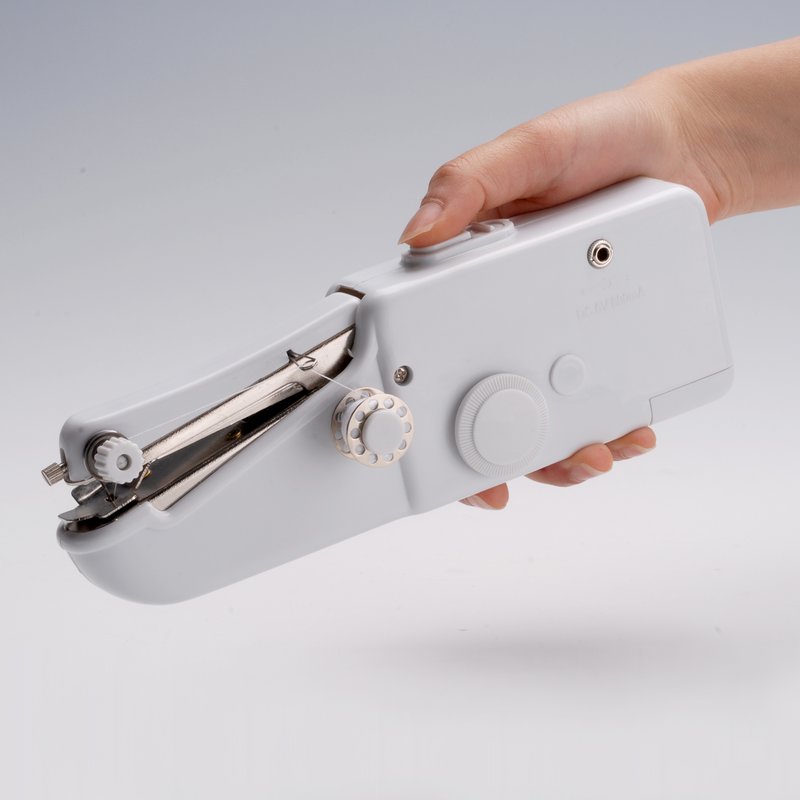There are countless sewing machines on the market today, but few had the impact the Singer Touch and Sew machine had when it was released.
Singer’s Touch and Sew series marked the end of the traditional heavy and bulky sewing machines. The brand replaced heavy steel, aluminum, and cast iron parts with parts manufactured from lightweight and durable plastics.
The result was a lighter, quieter machine that kept the strength and durability of its predecessors.
Even today, the Singer Touch and Sew line of sewing machines are known as reliable domestic sewing machines that can handle many sewing tasks. Whether you are using a vintage machine or one of the more recent models, learning how to properly use your Singer Touch and Sew machine will help you get the most out of it. To help you get started, we have broken down the steps for using a Singer Touch and Sew machine.
 Getting Ready to Sew with the Singer Touch and Sew
Getting Ready to Sew with the Singer Touch and Sew
Preliminary Steps:
- Connect the machine: Before you get started, you need to plug in your sewing machine. Make sure both the machine plug and the electrical outlet plug are securely in position. You will also want to make sure that the cord is not in a location where someone will trip over it, as this can damage the machine and your sewing project.
- Choose the correct setting: You need to select the right sewing speed for your needs. The FAST setting allows you to operate the machine at its full speed. Choose this setting if you are an experienced seamstress or you are working with thinner fabrics.
The SLOW setting gives you greater control, and it’s best for precision tasks, such as button sewing, buttonhole making, and any time you need to follow intricate patterns and lines.
Safety Tip:
You should always turn the machine off before you change needles or if you plan on leaving the sewing machine unattended to prevent the machine from being started by accidental contact with the speed controller.
Threading the Machine
The Touch and Sew’s spool holder can accommodate spools in a wide variety of sizes. For small spools, turn the smaller end to the right and slide it onto the spool pin. Press the holder firmly against the spool so that the thread will unravel from a stationary spool.
For larger spools, turn the wide end to the right and slide the spool onto the pin. Again, press the holder firmly against the spool so that it will unwind from a stationary spool.
Threading the Needle
- Raise the lever: Turn the handwheel towards you to raise the take-up lever to its highest position.
- Lead the thread through: Lead the thread through all threading points, and make sure you thread the tension discs from the top. You should also thread the take-up lever from back to front and guide the thread down over the top of the lever and then back up into the eyelet.
Thread the needle from front to back, drawing about four inches of thread through the eye of the needle.
Winding the Bobbin
Whether you are using a lot of one type of thread or small quantities of several different threads, the machine’s push-button bobbin allows for much faster sewing.
The bobbin is under the slide plate of the machine.
Preparation Steps:
- Raise the needle to its highest position: Raise the presser foot to release the thread tension and raise the needle to its highest position.
- Make sure the bobbin is empty: Open the slide plate and visually check to make sure the bobbin is empty.
- Fine-tune the needle position: Set the needle position and stitch width dials to the straight stitch setting.
Winding Steps:
- Get the bobbin into the winding position: Press the bobbin push button to the left to engage it in the winding position.
- Wrap the thread: Wrap your thread around the presser foot screw, holding the end of the thread firmly.
- Start the machine: Run it at a moderate speed. Make sure you pull the thread end away after a few coils have been wound and keep your eye on the bobbin as it fills.
- Get sewing: Close the slide plate and you’re ready to go.
How to Start Sewing
How you begin sewing depends on whether your stitching starts at or away from the edge of the fabric.
To Start Sewing at the Edge of the Fabric:
- Position the needle correctly: Position the needle at the very edge of the fabric by turning the handwheel towards yourself.
- Lower the foot: Lower the presser foot and begin stitching. The continuous thread will lock over the fabric’s edge.
To Start Sewing Away From the Edge of the Fabric:
- Position the thread: Pull the thread back under the presser foot and cut it.
- Position the needle correctly: Position the needle in the fabric where you desire and begin stitching.
Tips to Keep in Mind When Using the Singer Touch and Sew
Choose the Appropriate Needle and Thread for the Task at Hand:
The needle and thread you will use depend on the fabric you are working with for the project. The Touch and Sew comes with many needle types and sizes, so choose the correct one for the sewing task you are performing.
The instruction manual packaged with your Touch and Sew will explain which needle you should use with various fabric types.
Choose the Correct Presser Feet:
The type of sewing you plan on doing determines which presser foot and throat plate you should use.
As the name suggests, you will use the General Purpose Foot for general sewing purposes. Use the Straight Stitch Foot for more precision stitching along curved edges.
Choose the Special Purpose Foot for zigzag stitching. There are also other specialized presser feet for other sewing tasks, such as a Buttonhole Foot.
Always Read the Manual:
Most of the questions you have about your Singer Touch and Sew machine are answered by thoroughly reading through the instruction manual.

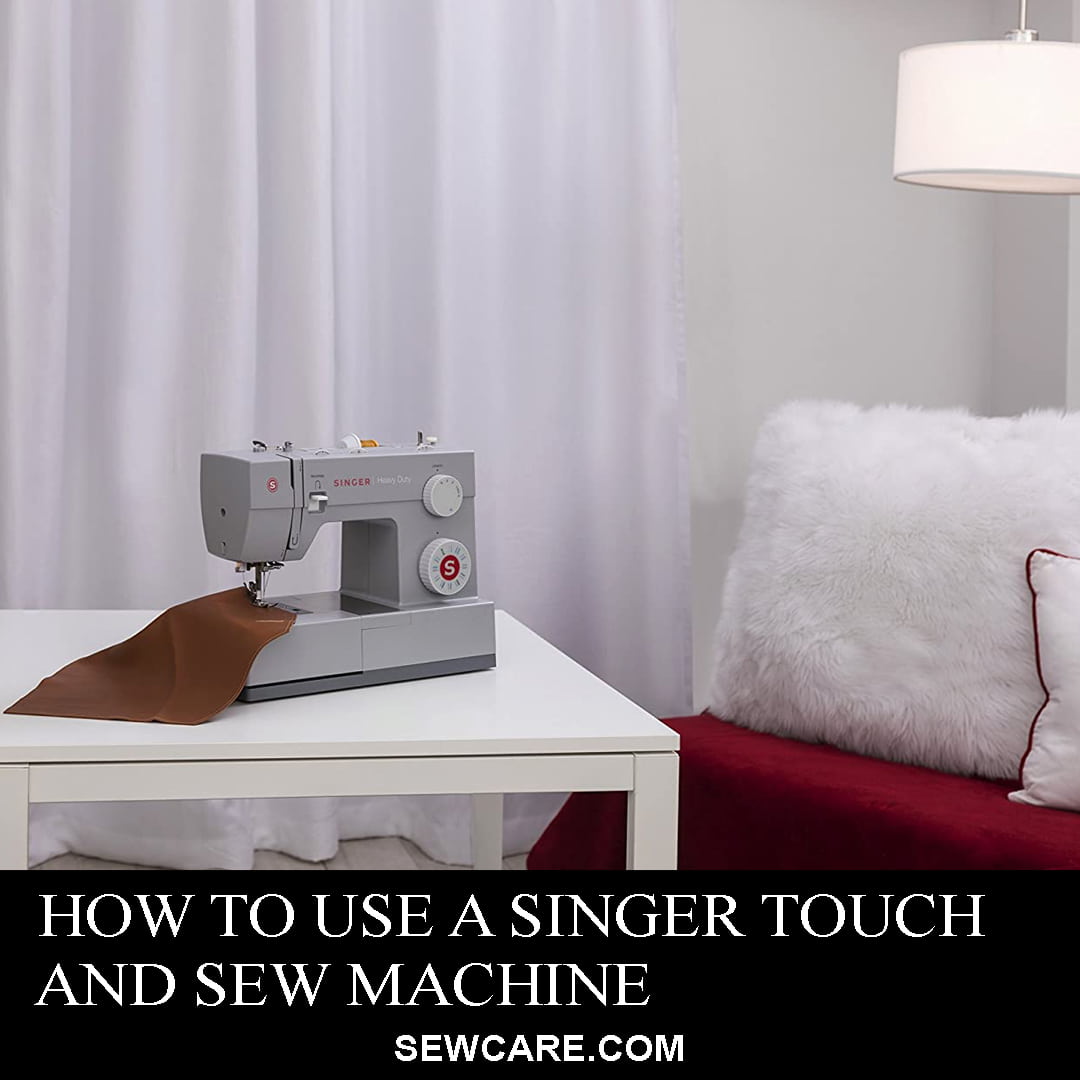 Getting Ready to Sew with the Singer Touch and Sew
Getting Ready to Sew with the Singer Touch and Sew